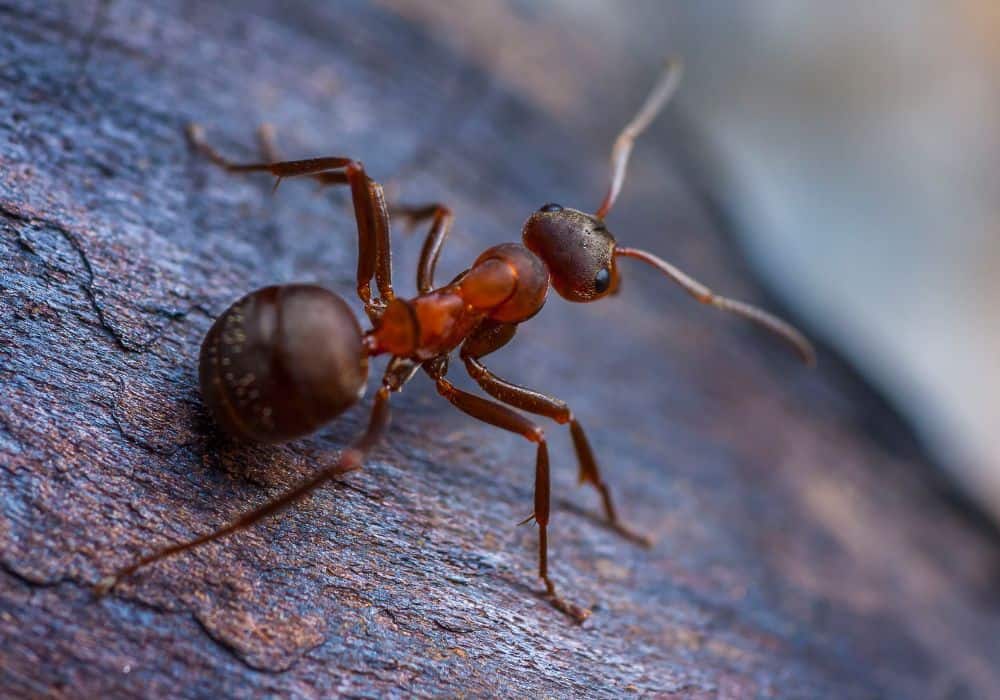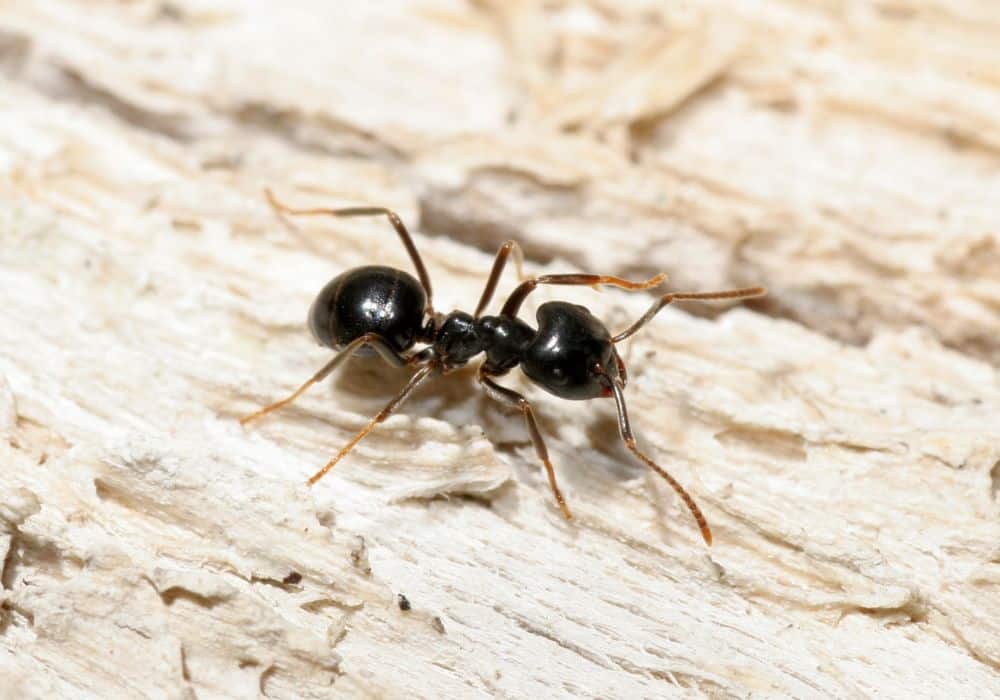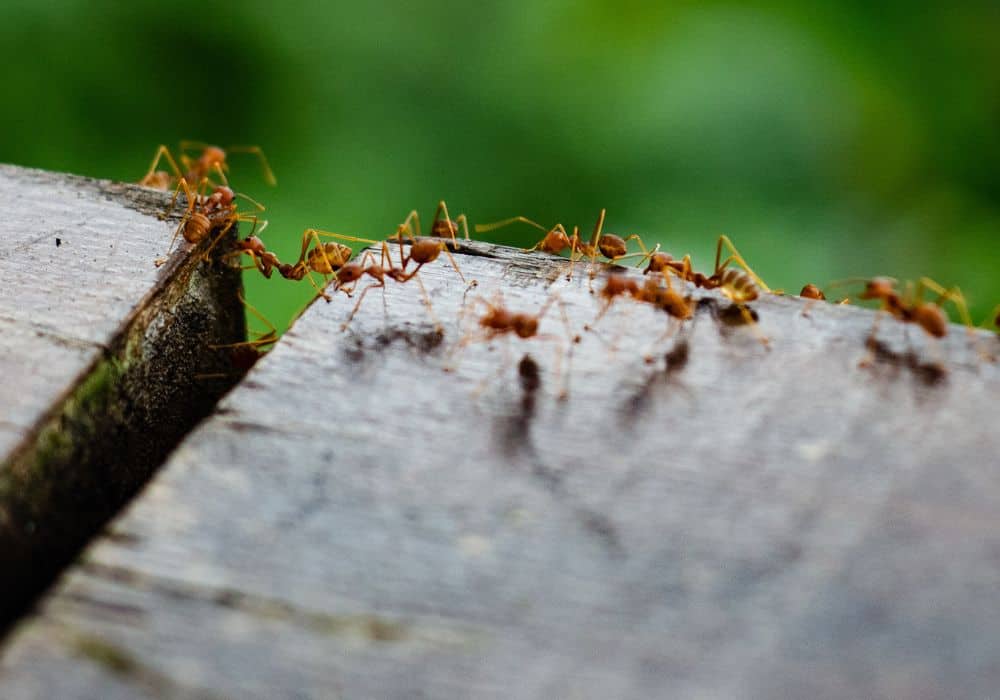Dogs love exploring. Be it outdoors or indoors, these furry pals will happily spend their day sniffing and peaking at random items.
But while curiosity is good, sometimes it leads to harmful outcomes – like ant bites!
In fact, ant bites are the most dangerous. These tiny bites are often hidden within your dog’s fur coat. You can’t really figure out why your dog is so sick, which delays the treatment time and worsens the condition.
So, as a pet owner, it’s very important to know how to identify, treat, and prevent ant bites on dogs.
Today’s article will educate you on exactly that. Let’s get started!
Are Ant Bites Harmful to Dogs?

Yes, ant bites are harmful to dogs.
These canines instantly develop red, itchy bumps when an ant bites or stings them. Some dogs may also hold their bitten hand up, whine, or aggressively lick and scratch the bitten spot to get rid of the pain.
But this situation only worsens when your dog:
- Is allergic to ant bites
Some dogs are more sensitive to ant bites than others. They experience anaphylaxis – a condition where the dog has severe allergic reactions to ant bites. It is characterized by vomiting, pale gums, extreme swelling, and difficulty breathing.
Your dog may also collapse if not treated on time.
- Is a small breed
A small breed (such as Chihuahua) is more likely to get into a life-threatening situation when compared to a large breed. This is because their small bodies can’t tolerate several ant bites at once.
So, if your small dog was bitten by 12+ ants, you will notice extreme reactions like diarrhea and hives.
- Has little fur over its body
A dog’s fur doesn’t only insulate its body but also protects it from unwanted insect bites. So, be it wasps, bees, or ants, hairy dogs are less likely to get bitten by anything. The creepy crawlies just won’t make it to the skin.
But if a dog is short-haired, the bites and stings can be frequent. This can lead to anaphylaxis.
- Has a weak immune system
Senior pets, or the ones with a troublesome medical record, are also prone to severe reactions after an ant bite. Their immune system is already so weak, and when the ant bites, their body is unable to respond to it the same way as a healthy dog’s body would.
You’ll have to provide special care and treatment to ensure their well-being.
How to Identify Ant Bites on Dogs?
The symptoms of ant bites can vary from dog to dog. But here are the most common ones you will find:
| Healthy Dogs | Allergic Dogs |
| Redness
Itchy bumps Swelling Whining Excessive scratching & licking Limping |
Vomiting
Hives Pale gums Facial swelling Respiratory distress Diarrhea Severe lethargy Collapse |
Please note that while ants can bite the dog anywhere on the body, they usually bite on the legs, snout, belly, and groin. These areas have little to no fur, so it’s easy to find tiny red bumps over there.
You can also examine the bumps to identify whether a male or female ant has bitten your canine pal. Male ants rely on their mandibles to pinch which results in raised bumps. Comparatively, females have venomous stingers that create pus-filled bumps.
However, don’t worry about the venom. It won’t poison your dog but will trigger mild to severe allergic reactions.
How Do You Treat Ant Bites on Dogs?

If your dog doesn’t have anaphylaxis, you can use the following home remedies to treat the ant bites:
1. Cold Compress
Cold compress refers to a method where you apply cold temperature to a specific area of the body. This helps reduce pain, swelling, and overall discomfort.
So, to make your dog feel better, you can use ice packs, ice cubes, or any frozen item as a cold compress. Just wrap the thing in fabric and gently press it onto the ant wounds. Press for 2 minutes, remove, and then press again after 2 minutes.
If your dog was attacked by some aggressive ants (like fire ants or red harvester ants), some of them are still likely to be on the fur. Give your dog a cold bath to clean the fur and lessen the pain.
But if it’s winter or the water is too cold, stick to the ice pack method because your dog can get frostbite.
2. Dog Cone
An ant bite usually resolves in a day or two. But if your dog keeps licking or scratching the wound, the situation can worsen, and a potential bacterial infection can set in. So, make your pet wear a dog cone to prevent it from disturbing the natural healing process.
3. Baking Soda Paste
Baking soda isn’t just a great cleaning agent but also a pain-relieving agent. The ingredient helps treat ant bites by reducing swelling and itchiness.
All you have to do is mix some baking soda with water to make a paste and gently put it on the bites. This eases discomfort and helps your dog feel better. But remember not to put it on any open wound, like cuts or scrapes.
4. Apple Cider Vinegar
Another household ingredient that can treat ant bites on dogs is apple cider vinegar. This particular vinegar has acetic acid, which eases the discomfort and agitation linked with insect bites.
To use it, pour 1 part of apple cider vinegar into 3 parts of water. Mix to create a solution, and then dab it onto the ant bites using a cotton swab. Don’t apply the vinegar directly as it can cause more irritation than before.
5. Epsom Salts
Epsom salts are not commonly used to treat ant bites on dogs, but they can be used. The salts help draw out toxins and bacteria in an ant bite wound. This removes the inflammation and ensures no bacterial infection occurs.
To use, dissolve a small amount of Epsom salt in warm water. Soak a clean cloth in the solution and gently apply it to the ant bite area for about 5-10 minutes.
6. Aloe Vera Gel
Aloe vera has anti-inflammatory properties that soothe ant bites on dogs. They ease the swelling and itchiness. You can use it by extracting some aloe vera gel from the plant and applying it directly to the wounds.
If you don’t have the plant, just purchase fresh aloe vera gel from the market. It might be a little pricey, but the instant pain-relieving effect on your dog will be worth it. However, make sure your pup doesn’t lick the gel.
7. Oatmeal Bath
This might sound strange but oatmeals can help treat ant bites on dogs. You won’t be using the typical oatmeal though. Instead, you will be using a water-mixed solution (also called an oatmeal bath).
First, grind oatmeal into fine powder so that it isn’t harsh against your dog’s skin. Then, mix it in lukewarm bathwater. This will create a murky soothing solution in which your dog can soak and relieve the pain.
But make sure your dog soaks in for at least 10 to 15 minutes. Wash your dog with fresh water afterward.
8. Topical Ointments
If nothing works, apply topical hydrocortisone cream or a soothing ointment containing ingredients like aloe vera or calendula. This will reduce all the symptoms associated with ant bites.
You can also use Benadryl (an antihistamine) or any other vet-approved medication if your dog has trouble breathing.
What If Your Dog Has Anaphylaxis?
Dogs who have an allergic reaction to ant bites should see a professional as soon as possible. Only veterinarians can provide the best solution to their condition and prevent things from worsening.
Please note that anaphylaxis can be fatal. Your dog may lose its life if the extreme facial swelling blocks its nose or diarrhea weakens its digestive system. So, never ignore them and seek professional care.
6 Tips to Prevent Ant Bites on Dogs

1. Keep Surroundings Clean
Regularly clean up food spills, crumbs, and pet food leftovers. Also, store food securely in airtight containers. This keeps the environment clean and reduces ants’ attraction to your property.
2. Seal Entry Points to Your Home
Close any cracks, gaps, and openings in your home’s walls, windows, and doors. Ants often enter homes seeking food and shelter, so blocking their access can help keep them out.
3. Avoid Ant-Infested Areas During Walks
While walking your dog, be cautious of areas with visible ant activity. Ant bites can occur during walks, so steer clear of ant mounds or congregations.
4. Use Pet-Safe Ant Repellents
These deter ants without posing harm to your dog. You can buy pet-safe ant repellents from the market or create your own natural repellents like vinegar or citrus sprays.
5. Trim Vegetation Near Your Home
Ants often use plants and shrubs as pathways to your home. Trim branches and vegetation away from your house to limit their access and discourage nesting.
6. Consult a Pest Control Professional if Needed
If ant infestations persist despite your efforts, consider seeking help from a pest control expert experienced in pet-safe methods. They can provide effective solutions while prioritizing your dog’s safety.
In a Nutshell
All in all, ant bites on dogs should not be taken lightly. If there are tiny red bumps on your dog’s body, immediately look for the other symptoms. These include swelling, itching, limping, excessive scratching, or licking.
Thankfully, healthy dogs will not be affected much and can be treated through the following home remedies:
- Cold compress
- Dog cone
- Baking soda paste
- Apple cider vinegar
- Epsom salts
- Aloe vera gel
- Oatmeal Bath
- Topical Ointments
But if a dog has anaphylaxis, the reaction to ant bites will be more severe and deadly. You must contact the vet to treat ant bites professionally. Hope your fluffy pal gets well soon!
Have any questions? Comment below, and we’ll try our best to help you out!
